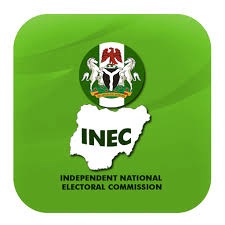By Sam Eno, PhD
As a former senatorial candidate for the Central Senatorial District of Cross River State and one who has traversed the diverse electoral terrains of the central senatorial district, I have witnessed firsthand the daunting reality faced by a vast majority of our electorate, particularly those who, due to socio-economic and educational disenfranchisement, cannot read nor write. These citizens, no less Nigerian than the most lettered among us, remain integral to the democratic process. Their right to vote, while constitutionally guaranteed, is often practically undermined by the systemic omission of a vital electoral aid: the photograph of the individual candidate on the ballot paper.
Presently, the Independent National Electoral Commission (INEC) permits the inclusion of party logos on ballot papers and at polling booths. While this is commendable, it is gravely insufficient. Political parties in Nigeria are manifold and often splintered by internal factions; their logos, some obscure or indistinct, are often confusing to the unlettered voter. This confusion has led to erroneous voting patterns, widespread disenfranchisement, and post-election litigations. The absence of candidate photographs in the voting booth is a disservice to participatory democracy, particularly in rural communities where candidate personality and familiarity, rather than abstract party philosophies, largely determine electoral support.
Let it be emphasized that democracy is not merely the act of voting, but the act of informed voting. An illiterate farmer in Yakurr, Abi, Obubra, or Boki may know “Okim” or “Samuel” as the candidate he or she supports, but may be utterly incapable of distinguishing the logos of the multitude of political parties on a crowded ballot. The inclusion of a small, passport-sized photograph of each candidate, alongside the party logo, would dramatically resolve this conundrum. It would empower such voters to cast their ballots with accuracy, clarity, and confidence.
The argument for this reform is not merely emotional; it is legal, logical, and democratic. Section 42 of the 1999 Constitution of the Federal Republic of Nigeria (as amended) prohibits discrimination on the basis of disability or circumstance. Illiteracy, in this context, functions as a cognitive disability in a written electoral environment. Any system that does not accommodate this demographic,estimated to comprise over 30% of Nigeria’s voting population,is de facto discriminatory.
Moreover, the Electoral Act empowers INEC to take measures that will facilitate voter participation and reduce confusion. In past off-cycle elections and pilot programs, INEC has toyed with innovations such as the use of color-coded ballot papers. Adding candidate photographs is an even more intuitive and cost-effective intervention. Countries with similar demographic profiles,Kenya, Malawi, and Ghana and have adopted this practice with remarkable success. In their cases, voter turnout and vote validity increased, while electoral confusion decreased significantly.
Let it be said in plain but powerful terms: the face is more recognizable than the logo. While political parties can fracture, change names, or rebrand logos overnight, a candidate’s face remains a fixed symbol of identity. Where a voter may forget a party symbol, he will not forget the countenance of a community leader he has followed, listened to, or interacted with.
In sum, the inclusion of candidate photographs on ballot papers and polling booth displays is not merely an electoral design improvement—it is a moral imperative. It is the simplest and most direct way to enfranchise millions of Nigerian voters whose only crime is the accident of being born into an under-literate society. It will boost electoral credibility, reduce void votes, curb post-election crises, and bring the soul of our democracy into clearer focus.
It is time to shift from logo loyalty to human recognition. Democracy must be made accessible, not only to the elite few who can read fine print, but to the grassroots multitude whose voices, though often unheard, are no less powerful. The face of democracy should include the faces of those who seek to serve it. Let INEC and all electoral stakeholders act now, history will remember this not just as a policy change, but as an emancipation.
Shall we not give sight to the blindfolded voter?

